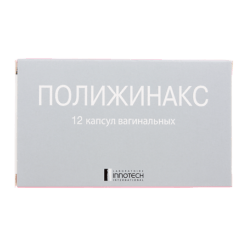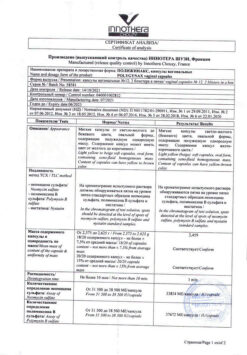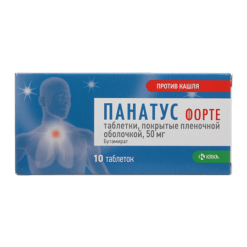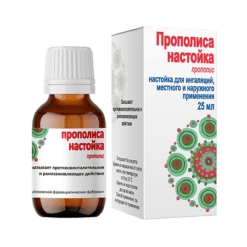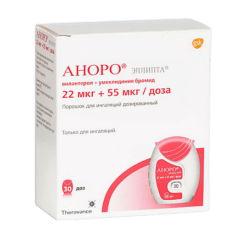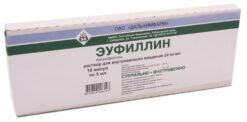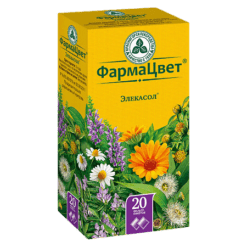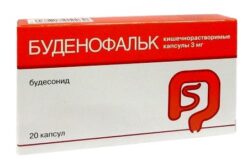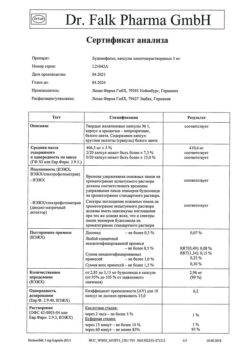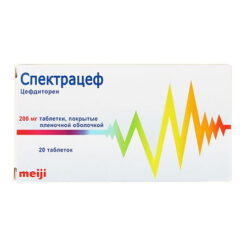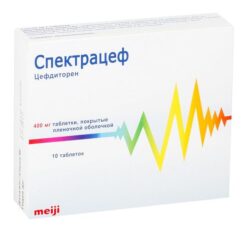No products in the cart.
Flixonase, spray 50 mcg/dose 120 doses
€28.42 €23.68
Description
GCS for intranasal use. It has a pronounced anti-inflammatory effect. When administered intranasally there is no systemic action, practically does not inhibit hypothalamic-pituitary-adrenal system.
No significant changes in the daily AUC of serum cortisol were found after administration of fluticasone propionate at a dose of 200 mcg/day compared to placebo (ratio: 1.01, 90% CI – confidence interval from 0.9 to 1.14).
The anti-inflammatory effect of fluticasone propionate is realized as a result of its interaction with glucocorticoid receptors. It suppresses proliferation of mast cells, eosinophils, lymphocytes, macrophages, neutrophils. Fluticasone propionate decreases production of inflammatory mediators and a number of biologically active substances (including histamine, prostaglandins, leukotrienes, cytokines) during the early and late phase of allergic reaction.
It has rapid anti-inflammatory effect on nasal mucosa. Anti-allergic effect appears 2-4 hours after the first use. It reduces sneezing, nasal itching, rhinorrhea, nasal congestion, nasal sinus discomfort and pressure sensation around nose and eyes.
It also reduces eye symptoms associated with allergic rhinitis. Reduction of symptoms (especially nasal congestion) persists for 24 hours after a single application of 200 mcg spray.
Fluticasone propionate improves patients’ quality of life, including physical and social activity.
Indications
Indications
Treatment of year-round and seasonal allergic rhinitis, including hay fever (hay fever) in adults and children over 4 years of age: pain, feeling of pressure in the paranasal sinuses; nasal congestion, sneezing, itchy nose; lacrimation.
Pharmacological effect
Pharmacological effect
GCS for intranasal use. Has a pronounced anti-inflammatory effect. When administered intranasally, there is no systemic effect and practically does not inhibit the hypothalamic-pituitary-adrenal system.
There was no significant change in daily serum cortisol AUC after fluticasone propionate 200 mcg/day compared with placebo (ratio: 1.01, 90% CI 0.9 to 1.14).
The anti-inflammatory effect of fluticasone propionate is realized as a result of its interaction with glucocorticoid receptors. Suppresses the proliferation of mast cells, eosinophils, lymphocytes, macrophages, neutrophils. Fluticasone propionate reduces the production of inflammatory mediators and a number of biologically active substances (including histamine, prostaglandins, leukotrienes, cytokines) during the early and late phases of the allergic reaction.
Has a rapid anti-inflammatory effect on the nasal mucosa. The antiallergic effect appears within 2-4 hours after the first use. Reduces sneezing, nasal itching, rhinorrhea, nasal congestion, sinus discomfort and pressure around the nose and eyes.
In addition, it relieves eye symptoms associated with allergic rhinitis. Reduction in the severity of symptoms (especially nasal congestion) persists for 24 hours after a single use of the spray at a dose of 200 mcg.
Fluticasone propionate improves the quality of life of patients, including physical and social activity.
Special instructions
Special instructions
The drug is indicated for intranasal use only.
For adults and children over 12 years of age: Do not use Flixonase® nasal spray for more than 3 months. If it is necessary to use the drug for more than 3 months, consult a doctor.
For children from 4 to 12 years old: Do not use Flixonase® nasal spray for more than 2 months. If it is necessary to use the drug for more than 2 months, consult a doctor. With long-term use, regular monitoring of the function of the adrenal cortex is necessary.
There are reports of systemic effects when using nasal corticosteroids, especially in high doses for a long time. These effects are much less likely than with oral administration. Systemic effects may occur with nasal corticosteroids, particularly when used in high doses over a long period of time. These effects are much less likely to occur than with oral corticosteroids and may vary in individual patients and between different corticosteroid medications.
Possible systemic effects may include Cushing’s syndrome, Cushingoid features, adrenal suppression, growth retardation in children and adolescents, cataracts, glaucoma, and less commonly a number of psychological or behavioral effects including psychomotor hyperactivity, sleep disturbances, anxiety, depression, or aggression (especially in children).
Growth retardation was observed in children receiving therapy with certain intranasal corticosteroids in approved doses. It is recommended to regularly monitor the growth of children receiving long-term treatment with intranasal corticosteroids. If growth slows, treatment should be reconsidered in order to reduce the dose of intranasal corticosteroids, if possible, to the minimum dose that ensures effective control of symptoms and consult a pediatrician.
Concomitant use of ritonavir and fluticasone propionate should be avoided unless the potential benefit to the patient outweighs the possible risk of systemic corticosteroid side effects.
It is recommended to stop taking the drug and consult a doctor if there is no improvement within 4 days. Consultation with a doctor is also necessary if the patient develops new symptoms, such as severe facial pain, thick nasal discharge, which may indicate an infection and are not related to allergies.
Infections of the nasal cavity or paranasal sinuses require appropriate treatment, but are not a contraindication to the use of Flixonase® nasal spray.
For most patients, fluticasone propionate nasal spray relieves the symptoms of seasonal allergic rhinitis, but in some cases, when the concentration of allergens in the air is very high, additional therapy may be necessary.
Additional therapy may be required to relieve eye symptoms during successful treatment of seasonal allergic rhinitis.
To achieve maximum therapeutic effect, it is necessary to adhere to a regular regimen of use.
Caution must be exercised when transferring patients from treatment with systemic corticosteroids to treatment with fluticasone propionate in the form of a nasal spray, especially if impaired adrenal function is observed during regular monitoring.
Flixonase®, aqueous nasal spray contains benzalkonium chloride, which may cause bronchospasm.
In case of contact with patients with chickenpox, measles, or in case of changes in vision, it is recommended to stop treatment and consult a doctor.
Impact on the ability to drive vehicles and machinery
In clinical studies, no data were obtained on the effect of the drug on the ability to drive vehicles and other mechanisms, however, the side effects that the drug may cause should be taken into account.
Active ingredient
Active ingredient
Fluticasone
Composition
Composition
Active ingredient:
fluticasone propionate (micronized) 50 mcg;
Excipients:
dextrose anhydrous,
microcrystalline cellulose,
microcrystalline carboxymethylcellulose,
phenylethyl alcohol,
benzalkonium chloride solution,
polysorbate 80,
hydrochloric acid, diluted,
purified water.
Pregnancy
Pregnancy
Before using Flixonase® during pregnancy and lactation, you should consult your doctor.
Flixonase® can be prescribed to pregnant and lactating women only if the expected benefit to the patient outweighs any possible risk to the fetus or child.
Contraindications
Contraindications
Hypersensitivity to fluticasone propionate and other components of the drug; children under 4 years of age; recent trauma to the nose or surgery of the nasal cavity.
Before using the drug, the patient should consult a doctor in the following cases: taking medications to treat HIV infection, such as ritonavir; taking corticosteroids for the treatment of bronchial asthma, allergies, skin rashes; taking medications to treat fungal infections, such as ketoconazole; taking other potent inhibitors of the CYP3A isoenzyme, for example, itraconazole; if you have glaucoma or cataracts.
Use with caution if you have a nasal or sinus infection. It should be borne in mind that infectious diseases of the nose require appropriate treatment, but are not a contraindication to the use of Flixonase nasal spray.
Side Effects
Side Effects
Determination of the frequency of side effects: very often (≥1/10), often (≥1/100 and <1/10), infrequently (≥1/1000 and <1/100), rarely (≥1/10,000 and <1/1000), very rarely (<1/10,000, including isolated cases).Very common, common and infrequent adverse reactions are mainly established on the basis of clinical trial data. Rare and very rare reactions are mainly determined from spontaneous reports.When generating the incidence of adverse reactions, background rates in the placebo group were not taken into account, but were taken into account since they were generally comparable to the active treatment group.From the immune system: very rarely – hypersensitivity reactions, incl. bronchospasm, rash, swelling of the face and tongue, anaphylactic reactions, anaphylactoid reactions.From the nervous system: often – headache, sensation of unpleasant taste and smell. Headache and unpleasant taste and odor have also been reported with other nasal sprays.From the organ of vision: very rarely – glaucoma, increased intraocular pressure, cataracts. A small number of spontaneous reports were associated with long-term drug therapy.From the respiratory system: very often – nosebleeds; often – dryness of the mucous membrane in the nasal cavity and pharynx, irritation of the mucous membrane in the nasal cavity and pharynx (these adverse reactions, as well as nosebleeds, were also observed when using other intranasal drugs); very rarely – perforation of the nasal septum (reported when taking intranasal corticosteroids).When using some intranasal corticosteroids, systemic effects may develop, especially when administered in high doses for a long time.
Interaction
Interaction
With simultaneous use of fluticasone propionate with ritonavir, which is a strong inhibitor of the CYP3A4 isoenzyme, a significant increase in the concentration of fluticasone propionate in blood plasma is possible.
As a result, there is a sharp decrease in serum cortisol concentration. The use of inhaled or intranasal fluticasone propionate and ritonavir leads to the development of side effects due to the systemic action of GCS, including Cushing’s syndrome and suppression of adrenal function. Therefore, concomitant use of fluticasone propionate and ritonavir should be avoided unless the potential benefit outweighs the risk of systemic effects.
Concomitant use of fluticasone propionate with other, less potent inhibitors of the CYP3A4 isoenzyme, such as ketoconazole and itraconazole, leads to increased exposure to fluticasone propionate and an increased risk of systemic side effects. Caution is recommended and, if possible, avoided long-term co-administration of these drugs.
Inhibitors of the CYP3A4 isoenzyme cause a negligible (erythromycin) or insignificant (ketoconazole) increase in plasma fluticasone propionate concentrations, which do not entail any noticeable decrease in serum cortisol concentrations. However, caution should be exercised when concomitantly using inhibitors of the CYP3A4 isoenzyme (for example, ketoconazole) and fluticasone propionate due to the possible increase in plasma concentrations of the latter.
Overdose
Overdose
There are no data on acute and chronic overdose of the drug.
When administered intranasally to healthy volunteers, 2 mg of fluticasone propionate 2 times a day for 7 days had no effect on the function of the hypothalamic-pituitary-adrenal system (doses 20 times higher than therapeutic).
Use of the drug in doses higher than recommended for a long time can lead to temporary suppression of adrenal function. In case of overdose, the patient should consult a doctor.
Clinical pharmacology
Clinical pharmacology
Suction
After intranasal administration of fluticasone propionate (200 mcg/day), Cmax in blood plasma at steady state is not quantitatively determined in most patients (less than 0.01 ng/ml). Cmax in plasma is 0.017 ng/ml. Direct absorption from the nasal mucosa is unlikely due to the low solubility of the drug in water and ingestion of most of the drug. When taken orally, absolute bioavailability is low (less than 1%) as a result of a combination of incomplete absorption from the gastrointestinal tract and active first-pass metabolism through the liver. The total systemic absorption is therefore extremely low.
Distribution
In the equilibrium state, fluticasone propionate has a large Vd – about 318 l. Plasma protein binding is high – about 91%.
Metabolism
Fluticasone propionate is rapidly eliminated from the systemic circulation mainly due to metabolism in the liver with the formation of inactive carboxylic acid via the CYP3A4 isoenzyme. Metabolism of the ingested fraction of fluticasone propionate during the “first pass” through the liver occurs in the same way.
Removal
The elimination of fluticasone propionate is linear in the dose range from 250 to 1000 mcg and is characterized by a high plasma clearance (1.1 l/min).
Plasma Cmax decreases by approximately 98% within 3-4 hours, and only at very low plasma concentrations was a final T1/2 of 7.8 hours observed.
The renal clearance of fluticasone propionate is insignificant (less than 0.2%), and the inactive metabolite, carboxylic acid, is less than 5%.
Fluticasone propionate and its metabolites are mainly excreted in bile through the intestines.
Short product description
Short product description
Flixonase is a new level in the treatment of allergic rhinitis!*
It is a nasal spray for the relief of symptoms of year-round and seasonal allergic rhinitis. The active ingredient is fluticasone propionate.
Helps relieve symptoms of allergic rhinitis for 24 hours**. Helps combat 6 symptoms of allergic rhinitis**, such as:
Runny nose
Nasal congestion
Sneezing
Itchy nose
Tearing
Feeling of pain and pressure in the sinuses.
* The first over-the-counter intranasal corticosteroid for the treatment of allergic rhinitis. It has a fundamentally different mechanism of action compared to antihistamines.
** Instructions for medical use, RU ПN015682/01 dated 04/08/2009
Storage conditions
Storage conditions
The drug should be stored out of the reach of children at a temperature not exceeding 30°C.
Shelf life
Shelf life
3 years
Manufacturer
Manufacturer
Glaxo Wellcome S.A., Spain
Additional information
| Shelf life | 3 years |
|---|---|
| Conditions of storage | The drug should be kept out of reach of children at a temperature not exceeding 30 ° C. |
| Manufacturer | Glaxo Wellcome S.A., Spain |
| Medication form | dosed nasal spray |
| Brand | Glaxo Wellcome S.A. |
Other forms…
Related products
Buy Flixonase, spray 50 mcg/dose 120 doses with delivery to USA, UK, Europe and over 120 other countries.


